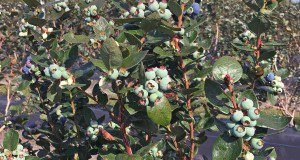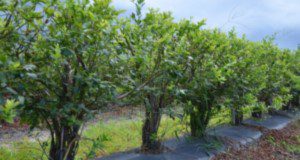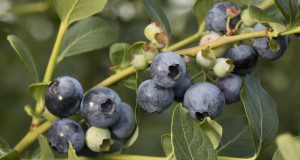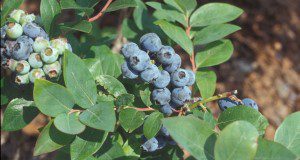In central and south-central Florida, many southern highbush blueberries (SHB) are grown in an evergreen system, in which the plants do not go dormant, and are managed to retain their leaves from the previous year through harvest the following spring to support early flowering and fruit set. The evergreen system has also been used under tunnels in north-central Florida. This new 3-page publication of the UF/IFAS Horticultural Sciences Department, written by Douglas A. Phillips, Jeffrey G. Williamson, and Patricio R. Munoz, provides an overview of the evergreen production system for SHB in Florida.
https://edis.ifas.ufl.edu/hs1362
Tag: Florida
Pruning Southern Highbush Blueberry in Florida
Pruning is an essential part of blueberry production and is used to help establish new plantings; promote postharvest growth of new foliage and fruiting wood; balance vegetative and reproductive growth; reduce disease and certain insect pressure; assist in harvesting efficiency; and promote new cane growth and plant longevity. This new 3-page publication of the UF/IFAS Horticultural Sciences Department is a discussion of pruning practices on southern highbush blueberry in Florida. Written by Douglas A. Phillips and Jeffrey G. Williamson.
https://edis.ifas.ufl.edu/hs1359
Nutrition and Fertilization Practices for Southern Highbush Blueberry in Florida
Research and field experience have demonstrated that fertilization is necessary to achieve proper growth and high yields in cultivated production of blueberries. This new 7-page publication of the UF/IFAS Horticultural Sciences Department provides guidance and management suggestions to Florida growers of southern highbush blueberry (SHB) for monitoring, supplying, and maintaining proper plant nutrition in commercial production operations. Written by Doug Phillips and Jeffrey G. Williamson.
https://edis.ifas.ufl.edu/hs1356
Florida Blueberry Leaf Disease Guide
Southern highbush blueberry (SHB) cultivars are commercially grown throughout much of Florida, in both deciduous and evergreen production systems. In both systems, leaves can be damaged by many factors including environmental conditions, chemical applications, insects, and diseases. This new 12-page publication of the UF/IFAS Plant Pathology Department includes basic information to assist growers in determining 1) the likely cause (fungal, viral, algal, or bacterial) of leaf symptoms, 2) when specific leaf spots are likely to occur, 3) characteristic symptoms of common leaf problems, and 4) some of the management options that are available. Written by Douglas A. Phillips, Norma C. Flor, and Philip F. Harmon.
http://edis.ifas.ufl.edu/pp348
Circular 1242: Handbook of Florida Fence and Property Law
Re-released as a minor revision for 2010 and of interest to farmers and farmland owners in particular, this handbook is designed to inform property owners of their rights and responsibilities in terms of their duty to fence. Discussed areas include a property owner’s responsibility to fence when livestock is kept on the property, the rights of adjoining landowners to fence, the placement of fences, encroachments, boundary lines, easements, contracts, nuisances, and a landowner’s responsibilities towards persons who enter his property. Published August 2010. http://edis.ifas.ufl.edu/topic_book_florida_fence_and_property_law
FSHN07-07/FS143 Hazard Analysis Critical Control Points (HACCP) Principle 6: Establish Verification Procedures
FSHN07-07, a 7-page fact sheet by Ronald H. Schmidt and Debby L. Newslow, describes the final HACCP principle, which consists of establishing verification procedures for the entire plan and ensuring that the system is operating correctly in accordance with the plan. Published by the UF Department of Food Science and Human Nutrition, August 2007. http://edis.ifas.ufl.edu/FS143



